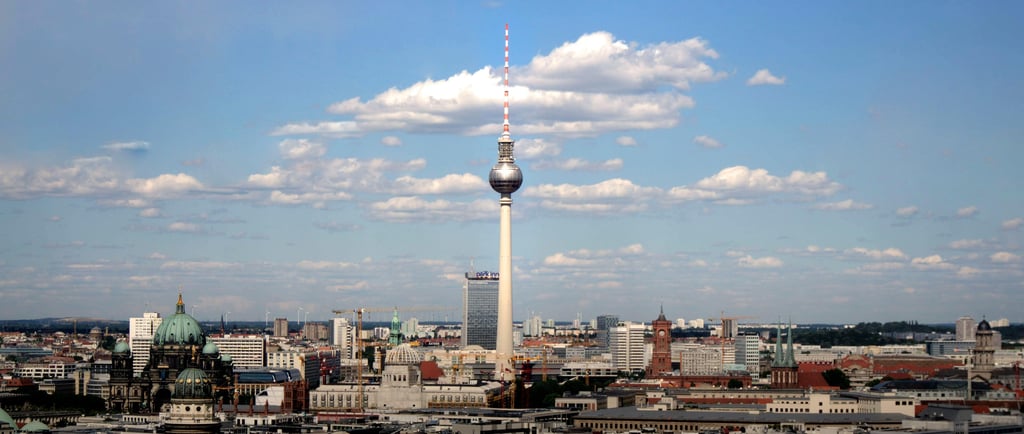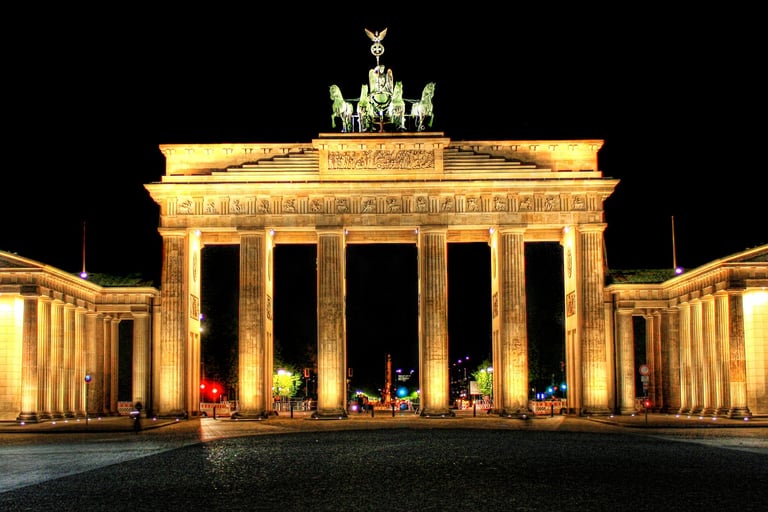Berlin – Walls Between Time
Uncover Berlin, where echoes of history and modern energy collide—each street a passage through walls that once divided and now define.
DESTINATIONS
Jetsclusive
6/30/20254 min read


Berlin – Walls Between Time
Berlin isn’t just another European capital. In every corner, there are signs of its past, reminders of when a concrete wall split the city in two. For decades, the Berlin Wall wasn’t just a border. It was a scar cutting through families, friendships, and dreams. Even today, Berlin wrestles with the memory and meaning of those walls, both visible and invisible.
Rising Walls: The Construction and Life of the Berlin Wall
The Historical Backdrop: Why the Wall Was Built
After World War II, Berlin found itself at the center of a new global standoff. The city, like much of Germany, was divided between the Western Allies and the Soviet Union. Tension built quickly as the world split into two camps—one championing democracy, the other communism.
By the summer of 1961, East Germany faced a crisis. Nearly three million people had fled to the West via Berlin, seeking freedom and better opportunities. Many were young and skilled. Their losses threatened East Germany’s economy and the very survival of the country. The government decided to act. In the early hours of August 13, 1961, East German workers, under heavy guard, rolled out barbed wire and set up cinder blocks. Streets were closed, telephone lines were cut, and Berliners woke to find the city split apart overnight.
The wall grew from simple barriers to a vast, 155-kilometer-long, highly guarded border. Concrete sections, guard towers, spotlights, armed patrols, and a deadly “death strip” full of traps and mines sprang up. The goal: stop the flow of defectors at any cost.
Compare Private Jet Pricing To Berlin Here Powered By Villiers Jets - Trusted by 1000+ flyers worldwide
A City Divided: Everyday Life Along the Wall
Life along the wall was a study in contrasts. West Berlin buzzed with energy, a tiny island of capitalism in Soviet-ruled East Germany. East Berlin felt tense and tightly controlled, with citizens under constant watch by secret police. For many, the wall was a daily reminder of what they'd lost.
People risked everything to escape. About 5,000 managed it, using homemade contraptions, forged documents, and even hot air balloons. Many didn't make it. At least 136 people lost their lives, shot or caught in failed escape attempts. Families couldn't visit each other. Friends grew apart. Children learned early not to ask too many questions or trust too easily.
This wasn’t just a physical barrier. The wall became a psychological one. Berliners learned to live with suspicion and fear, and even as the years dragged on, hope never fully left the city.
The Fall: From Division to Reunification
By the late 1980s, the world was changing fast. Eastern Europe burst into protest. Hungary opened its borders. In Berlin, thousands hit the streets, chanting for freedom and reform. The East German regime wobbled and finally gave in.
On the night of November 9, 1989, confusion at a press conference led to the now-famous announcement: East Berliners could cross into the West right away. Crowds surged through checkpoints. Border guards, unsure and overwhelmed, let them pass. Strangers hugged. Families reunited. People took hammers to the wall—chipping away not just concrete but decades of fear and sorrow.
Within a year, Germany was whole again. On October 3, 1990, reunification became official. The Berlin Wall, once a symbol of division, now stood for hope, freedom, and change.
Walls That Remain: Legacy and Contemporary Impact
Cultural Memory: Art, Memorials, and Media
Today, only fragments of the Berlin Wall remain. Some stand as silent witnesses, but others burst with color and emotion. The East Side Gallery, a stretch covered in murals, captures this spirit best. Artists from around the world painted messages of peace and unity across the stone, turning a symbol of oppression into one of creativity and connection.
Memorials dot the city, each telling a story. Some honor those who lost their lives trying to cross. Others recall moments of resistance and solidarity. Berlin doesn’t hide its past but confronts it head-on in art, museums, and in stories told through film and books.
The Wall has become part of global culture. It appears in music, movies, and novels as a metaphor for separation and the unbreakable urge for freedom. Checkpoint Charlie, once a tense border crossing, now stands as a lesson from history and a magnet for visitors from around the world.
Compare Private Jet Pricing To Berlin Here Powered By Villiers Jets - Trusted by 1000+ flyers worldwide
Socioeconomic and Political Divides Since Reunification
Tearing down a wall is easy compared to healing what it left behind. Germany’s reunification happened quickly, but economic and social gaps remain. The West surged ahead in jobs and growth, while many in the former East still face higher unemployment and lower wages.
Older East Germans sometimes talk of an invisible ‘wall in the head’—a lingering sense of difference that shapes their politics, culture, and daily lives. Election results and surveys show a difference in attitudes, with distinct patterns in who people vote for and how they feel about the future.
These divides don’t mean reunification failed. They show the real work of unity is never finished. Berlin faces them openly, turning them into topics for discussion, research, and new policies.
Berlin’s Walls Today: Symbolism and Lessons for the Future
Berlin may be physically whole, but the lessons of the wall live on. The city's new walls are social, economic, and sometimes cultural. Old differences still matter, but so does the push toward a deeper unity.
Key lessons from Berlin’s experience:
Barriers often outlast their builders, settling deep in memory and identity.
Reconciliation takes more than words or treaties; it demands honest reflection and action.
Art and public memory can help heal, keeping the mistakes of history close enough to learn from.
Berlin’s story has global echoes, reminding us that unity needs constant effort. The wall may be gone, but its shadow remains a guidepost for those seeking a more open and honest society.
Conclusion
Berlin’s journey from a city split by concrete and wire to a beacon of hope shows the power of human determination. History lives in its streets, carried by old scars and new dreams. Confronting the visible and invisible walls—past and present—lets Berlin point the way forward. The lesson is simple but powerful: facing hard truths builds the only kind of future worth having, one where no barrier is truly permanent.


Luxury
Explore the world of private aviation and travel.
support@jetsclusive.net
© 2025. All rights reserved.
